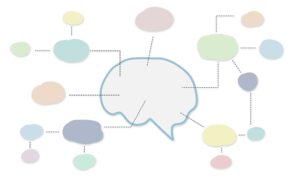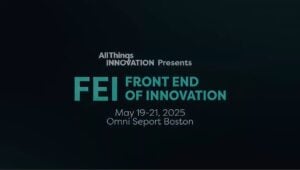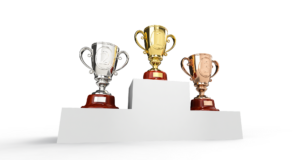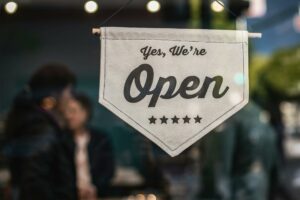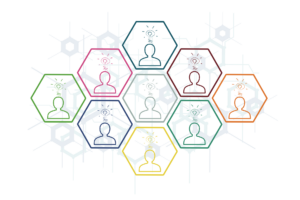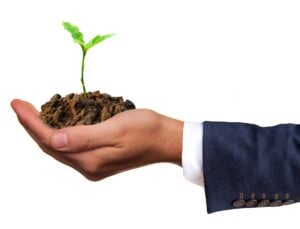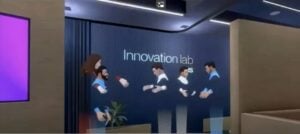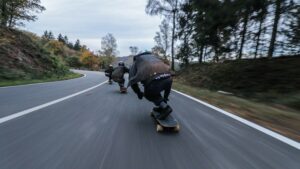KEY QUOTES
- “Skin in the game makes innovation less risky.”
- “You’ve transformed our innovation group from a cost center to an engine of growth.”
- “Innovation culture is no longer optional. It’s actually essential.”
FULL SESSION SUMMARY
De-risking Innovation with “Skin in the Game”
The “How to Create Breakthrough Innovations Risk-Free” session introduced a novel approach to innovation validation through prelaunched.com, a platform that gathers authentic market validation by having potential customers place small deposits on early-stage concepts. This method provides stronger signals of genuine purchase intent than traditional surveys and helps companies make better innovation decisions by collecting real behavioral data. The session highlighted a decline in breakthrough innovation in the CPG sector, with many companies hesitant to pursue innovative products due to factors like risk aversion and a lack of trust in traditional market research data.
The presenter emphasized that paid respondents in traditional research often don’t translate their opinions into actual purchase behavior. The prelaunch.com platform addresses this by offering incentives for deposits and collecting rich qualitative and quantitative data from both those who place deposits and those who decline, including surveys, interviews, and AI-powered conversations. This data is analyzed using machine learning to create detailed customer personas and benchmark products, providing a “pre-launch score” based on 35 different metrics. The platform can be used at various stages, from comparing early-stage ideas to fine-tuning messaging before launch. The service is noted to be significantly more affordable than average market solutions and works across various price points for truly innovative products.
Co-Development: Accelerating R&D with Startups
The “Co-Development: Turbocharge Enterprise R&D” session focused on leveraging partnerships between corporations and startups to accelerate R&D, de-risk M&A, and drive tangible business results. Venture Fuel shared their 11 years of experience in helping large organizations commercialize innovation through structured, time-bound programs with clear success criteria. This approach has yielded impressive results, including $2 billion in incremental revenue for a materials science client and 45 simultaneous AI pilots for Comcast NBC Universal.
The presenters positioned partnering as a complementary strategy to traditional R&D (build) and M&A (buy), acting as “connective tissue” that accelerates internal innovation and de-risks acquisitions. They addressed common barriers like “not invented here” syndrome and rigid legal processes, suggesting that involving legal and procurement teams as allies can overcome these. Venture Fuel’s methodology begins with strategic alignment to broader business goals rather than predefined solutions, allowing for exploration of creative adjacencies from different industries. The methodology emphasizes structured evaluation, time-bound collaborations (typically 12 weeks), and clear success criteria aligned with business relevance and technical feasibility. The ultimate goal is commercialization, with clear end goals such as joint development agreements or acquisitions.
The High Noon Success Story: Embracing Fluidity in Innovation
The “Sowing the Seeds of End-to-End Innovation: The High Noon Success Story” session detailed how High Noon pivoted from a vodka product to a market-leading vodka seltzer by observing consumer trends and embracing agility. Michele Sandoval and Ron Wetklow of Gallo shared their circular innovation model, emphasizing that innovation is fluid and iterative, not linear. They stressed the importance of researching culture, category, and consumers through ethnographic research and cultural immersion, citing examples like visits to the Iowa State Fair to challenge assumptions.
The High Noon vodka, initially developed to compete in the premium vodka market, only performed moderately well. The pivotal moment came from “feet on the street” market visits in Denver and Chicago, where the team observed the rapid growth of seltzers, leading to a quick pivot to High Noon Seltzer within six months. Key differentiators included real juice and a vodka base. To overcome distribution challenges, they formed a strategic partnership with Dave Portnoy of Barstool Sports, which significantly amplified the brand’s reach. The session also highlighted the importance of building a robust innovation pipeline, leading to new variety packs, spirit bases, and product categories for High Noon. The Pink Whitney case study further illustrated rapid innovation by capitalizing on social media trends and quickly launching a product in partnership with a hockey podcast.
Community & Conversational Intelligence: AI and Deep Listening
The “Community & Conversational Intelligence: How AI & Deep Listening Will Reshape Front End Innovation” session showcased how Pilot 44 and Glystn use AI-powered deep listening to extract valuable consumer insights from social media conversations. Their platform analyzes cross-platform social media data, including transcripts and imagery, to identify emerging trends, brand positioning, and product opportunities in real-time. This approach allows brands to innovate at the speed of culture by understanding authentic consumer needs and engaging with influential communities.
Mary Lague highlighted three trends reshaping brand building: the $250 billion creator economy, creator-fostered communities, and the rise of social commerce. She noted that culturally relevant brands grow significantly faster. Ethan Fassett demonstrated Glystn’s platform, which uses an AI agent to clarify research parameters and then analyzes social media data, including video transcripts and AI-generated image descriptions. The platform generates reports on product trends, brand sentiment, competitive landscapes, and white space opportunities, and identifies influential creators. Deep listening provides real-time, unfiltered insights into natural consumer language and behavioral truths from platforms like Reddit, often overlooked by traditional research.
Innovation ROI: Harnessing Emissions for Profitability
The “Innovation ROI: Harnessing Emissions To Drive Profitability” session explored how Carbon Negative Solutions transforms industrial waste and CO2 emissions into valuable products like cement replacements, demonstrating profitability from waste. Keith Crossland emphasized that climate innovation extends beyond traditional areas like EVs and renewable energy, highlighting Carbon Capture Utilization and Storage (CCUS) as a rapidly evolving area. He differentiated between carbon storage and carbon utilization, advocating for the latter as it creates revenue-sharing opportunities by converting captured CO2 into valuable products, such as synthetic diamonds, advanced materials, and construction materials. Carbon Negative Solutions specifically uses AI and advanced modeling to optimize blending CO2 with various waste streams (e.g., steel byproducts, coal waste) to create carbon-negative cement supplements, predicting material properties with 95% confidence and dramatically accelerating development. Crossland encouraged companies to explore their waste streams for upcycling opportunities, noting regulatory support and financing for such initiatives.
Establishing an Innovation Culture Roadmap
The “Establishing An Innovation Culture Roadmap” session, led by Ophelia Chiu of Memorial Sloan Kettering Cancer Center, presented the “Kite” framework for cultivating innovation culture: Knowledge, Inspiration, Translation, and Engagement. Chiu emphasized that innovation culture is essential for organizations facing disruption. Her team defined core principles for innovation culture, including fostering community, thinking like an entrepreneur, and empowering everyone as an innovator. Research was conducted to understand MSK’s diverse staff and identify nine innovation personas based on their experience, preferred roles, support needs, and value creation focus.
The Kite framework provides accessible learning opportunities, sparks curiosity through immersive experiences, supports real-world application of skills, and builds a community of innovators. Chiu also identified organizational levers that either activate or hinder innovation, such as alignment with strategy, incentives, and a growth mindset versus conflicting goals and risk aversion. Despite initial mixed support, her team pivoted to start small with an eight-week pilot course on human-centered design, validating interest and refining their roadmap. She concluded that culture change doesn’t require a mandate but can begin by “sowing a few seeds” that can thrive with proper care.
AI Energy: Balancing Nuclear Risk with Business Need
The “AI Energy – Balancing Nuclear Risk with Business Need” session explored the complex relationship between expanding civil nuclear energy and managing proliferation risks. Speakers discussed how nuclear technology offers reliable, carbon-neutral energy for growing demands, including data centers, while stressing the need for robust safeguards and industry-government collaboration. The session began by highlighting the escalating global nuclear challenges, noting that “every single nuclear weapon challenge in the world is trending in the wrong direction”. The fundamental tension is what Eisenhower called “the promise and peril of nuclear technology,” where civil nuclear capacity can serve as a “nuclear weapons starter kit”.
An industry veteran shared insights from 40 years in nuclear power, emphasizing its safety record and robust security measures. The discussion also covered international security implications, such as the danger of nuclear facilities in conflict zones. The role of AI in nuclear operations was a key topic, with potential for AI to analyze vast data, diagnose issues, and provide solutions faster than human operators, enhancing safety and security. However, a cautionary note was raised about AI’s potential offensive use and the need for international norms. The session concluded by emphasizing that while nuclear waste management is improving, sustainable growth requires balancing innovation with safeguards, international cooperation, and public education.
KEY TAKEAWAYS
- Authentic Market Validation: Relying on “skin in the game” through small customer deposits provides significantly more reliable validation for early-stage product concepts than traditional surveys.
- Strategic Co-Development: Partnering with startups through structured, time-bound programs can accelerate R&D, de-risk M&A, and generate substantial revenue, leveraging external innovation to achieve business objectives.
- Agile Innovation and Market Immersion: Embracing fluidity in the innovation process, staying close to consumers and culture through ethnographic research, and being prepared to pivot quickly are crucial for responding to emerging market opportunities.
- AI for Deep Consumer Insights: AI-powered deep listening tools can provide real-time, unfiltered insights from social media conversations, identifying emerging trends, white space opportunities, and influential communities, enabling brands to innovate at the speed of culture.
- Monetizing Waste Streams: Companies can transform CO2 emissions and industrial waste into valuable products, creating new revenue streams and transforming sustainability from a cost center to a profit center with bipartisan support.
- Cultivating Innovation Culture: Building an innovation culture requires a structured framework (like Kite), understanding diverse internal audiences, addressing organizational barriers, and starting with small, targeted pilot programs that can sow seeds for lasting transformation.
- Balancing Innovation with Risk Management: In critical sectors like nuclear energy, expanding innovation must be balanced with robust safeguards, regulatory frameworks, international cooperation, and public education to manage inherent risks and ensure long-term sustainability.
DELIVERY ON EVENT FOCUS: Aligning Innovation with Business Strategy
The Future Trends to Customer 2030 track consistently highlighted the critical importance of aligning innovation with business strategy. The “skin in the game” validation approach ensures that innovation decisions are based on real purchase intent, directing resources towards concepts with the best market potential and avoiding costly failures. Co-development with startups directly links external innovation to strategic business objectives like accelerated R&D and de-risked M&A, transforming innovation groups from cost centers to growth engines. The High Noon case study exemplified strategic pivots based on deep consumer understanding, demonstrating how initial “failures” can inform successful new product launches that align with market demand and drive long-term growth. AI-powered deep listening provides real-time market intelligence, allowing brands to develop innovations that resonate with authentic consumer needs and identify white space opportunities for strategic focus. Carbon Negative Solutions showcased how climate innovation can directly contribute to profitability by transforming emissions into valuable products, aligning sustainability goals with financial returns. Finally, establishing an innovation culture roadmap, as presented by Memorial Sloan Kettering, emphasized connecting innovation efforts to core organizational values, addressing business challenges, and measuring strategic impact.
DELIVERY ON EVENT THEME: Harvesting Innovation and Sowing the Seeds of Future Growth
The track’s theme of “Harvesting Innovation and Sowing the Seeds of Future Growth” was central to each session. Prelaunch.com exemplifies harvesting by gathering insights directly from people ready to buy, effectively “harvesting” genuine purchase intent and enabling data-driven refinement of concepts before full market launch. Co-development with startups harvests external innovation and accelerates experiments, while also sowing seeds for future growth by building long-term ecosystem relationships and capabilities. The High Noon success story is a prime example of harvesting insights from an initial product launch—even a less successful one—to sow the seeds for a tremendously successful pivot into a new category, continuously identifying new growth opportunities through market observation and building robust innovation pipelines. AI-powered deep listening harvests insights from billions of existing social media conversations and consumer trends, while sowing seeds for future growth by identifying influential creators and enabling community engagement and co-creation for future products. Carbon Negative Solutions literally harvests existing emissions and waste streams, transforming them into valuable assets and sowing seeds for sustainable growth by creating new revenue streams and resilient business models for the future.
The innovation culture roadmap focused on “sowing seeds” of innovation culture through targeted pilot programs that can grow into lasting transformation, nurturing innovation capabilities and building a community to sustain long-term growth. Similarly, the AI Energy session discussed harvesting innovations in nuclear technology and AI to address current energy demands while sowing seeds for sustainable future growth through advanced reactor designs, waste recycling, and enhanced safety systems.
ACTION ITEMS FOR INNOVATION EXPERTS & CORPORATE CHANGEMAKERS
- Reassess Validation Methods: Evaluate current market research for innovation and integrate “skin in the game” methodologies that require actual purchase intent, such as small deposits, to gain more reliable market validation.
- Explore Co-Development Partnerships: Audit your innovation sourcing strategy to look beyond traditional sources and consider structured partnerships with startups, including those from adjacent industries, to accelerate R&D and de-risk M&A.
- Implement Cultural Immersion: Schedule regular activities for your teams to immerse themselves in consumer environments and cultural trends, fostering deep insights that challenge assumptions and reveal new opportunities.
- Invest in AI-Powered Deep Listening: Audit your social listening capabilities to ensure they provide deep insights beyond basic keywords, including transcript analysis and image recognition, and map your category’s communities to understand where authentic conversations are happening.
- Audit Waste Streams and Emissions: Conduct a comprehensive inventory of all waste outputs and CO2 emissions to identify potential feedstocks for upcycling into valuable products and explore revenue-sharing models with technology providers.
- Develop an Innovation Culture Roadmap: Conduct internal audience research to understand your organization’s innovation personas, then design a tailored framework (e.g., Kite) addressing knowledge, inspiration, translation, and engagement.
- Engage with Regulatory Frameworks Proactively: For energy-intensive innovations, proactively collaborate with regulatory bodies to ensure compliance and help shape effective regulations, particularly for emerging technologies like nuclear energy and carbon capture.
- Start Small and Iterate: When facing organizational resistance, identify innovation-minded leaders and implement small pilot programs to demonstrate value and refine your approach before scaling.
- Define Clear Commercial Outcomes: Ensure all innovation projects and startup collaborations have defined potential commercial outcomes upfront (e.g., joint development, licensing, investment, acquisition) to avoid endless piloting and ensure tangible results.
- Build Robust Innovation Pipelines: Develop systematic approaches to continuously generate and evaluate new product concepts across formats, flavors, and adjacent categories, fostering sustained growth.
Contributor
-
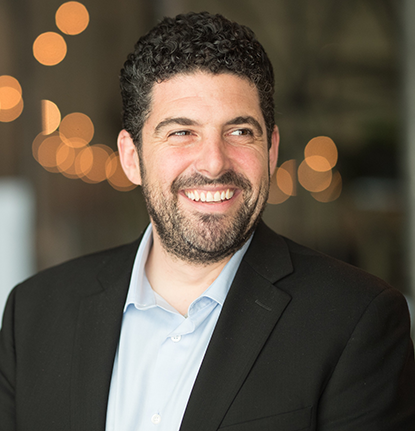
Seth Adler heads up All Things Insights & All Things Innovation. He has spent his career bringing people together around content. He has a dynamic background producing events, podcasts, video, and the written word.
View all posts










